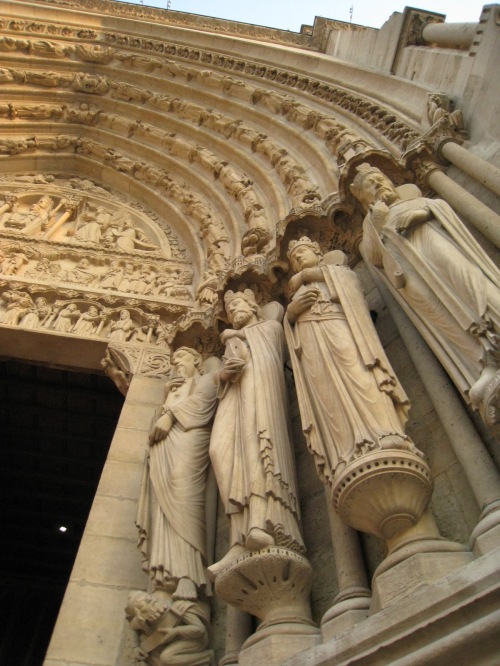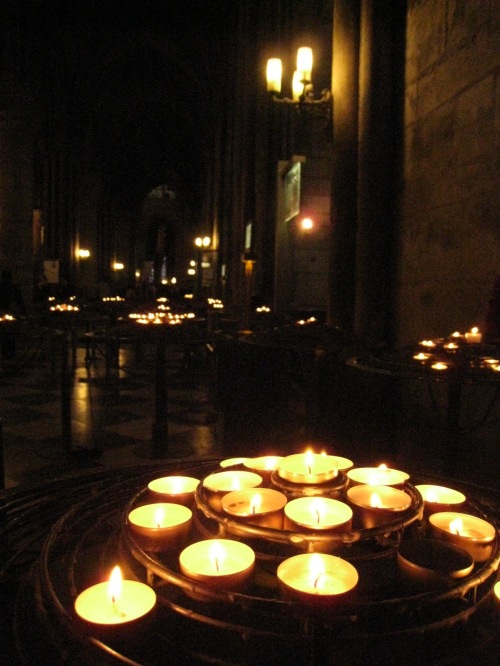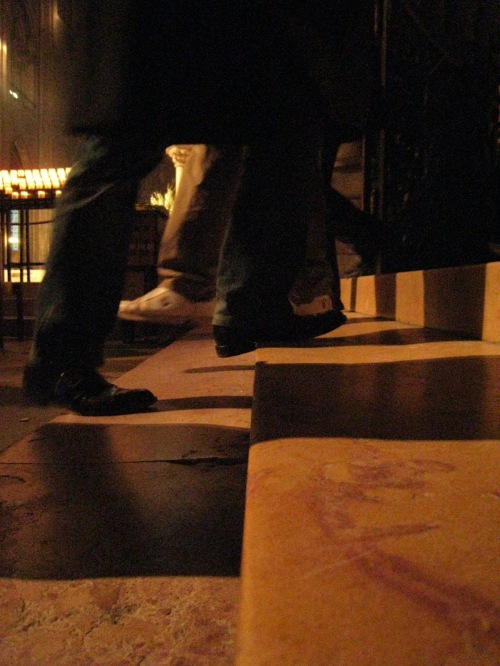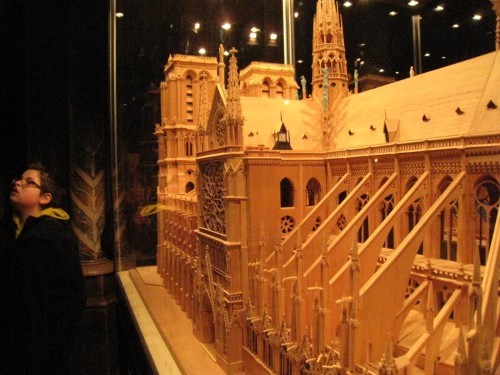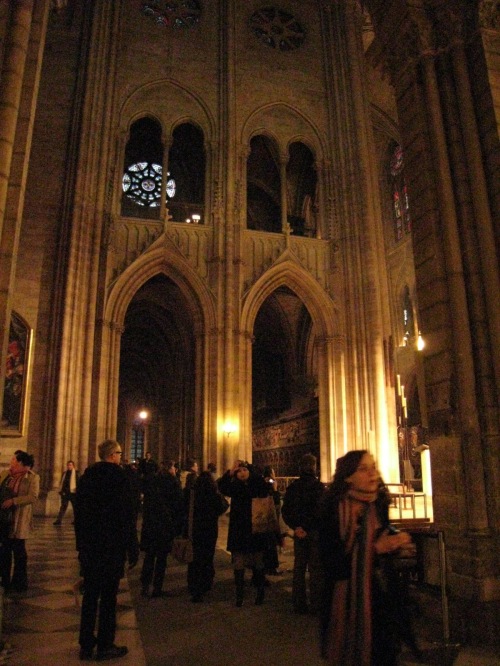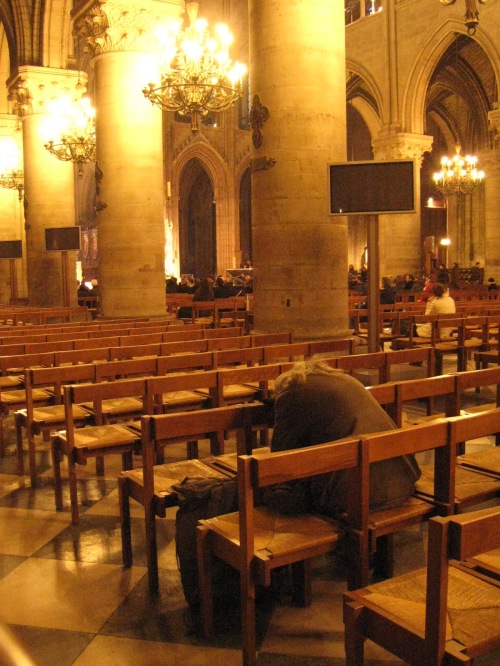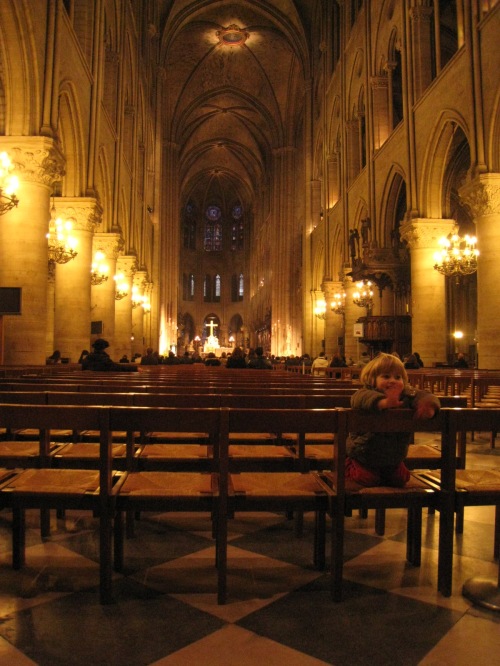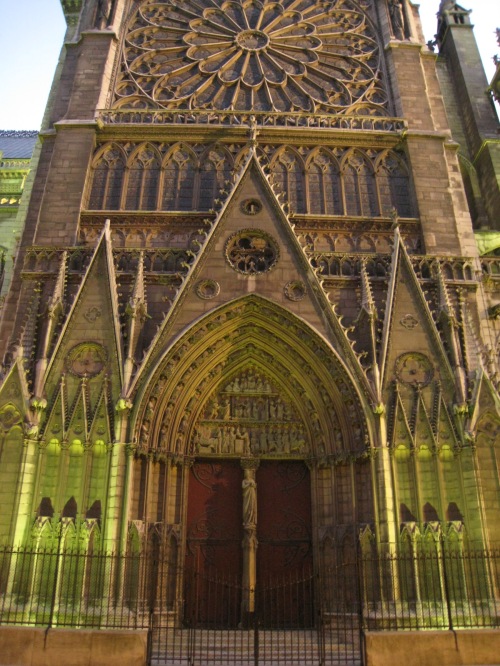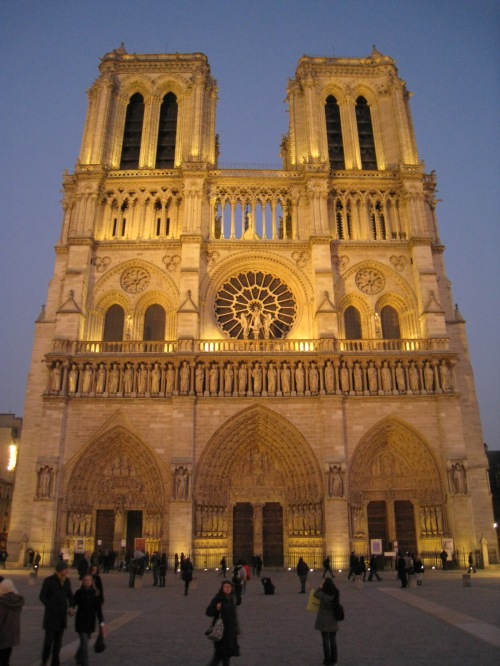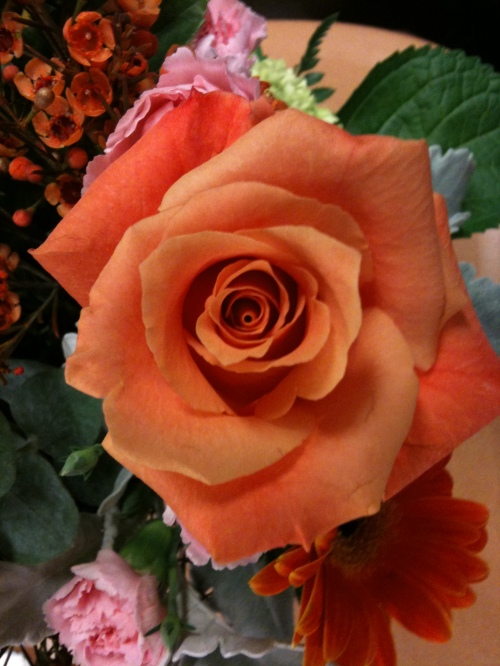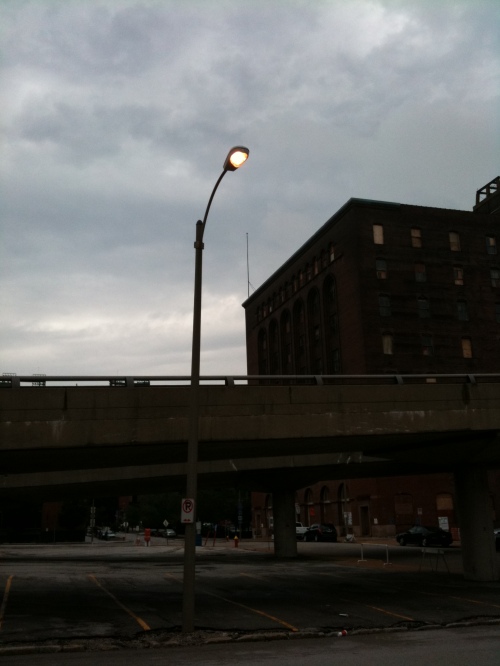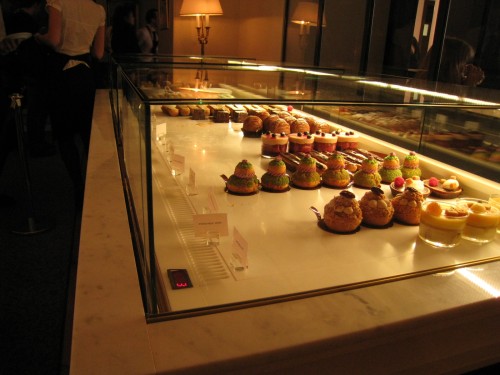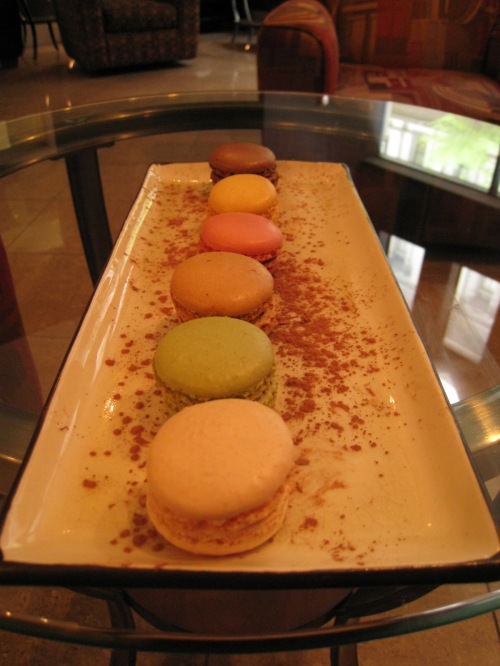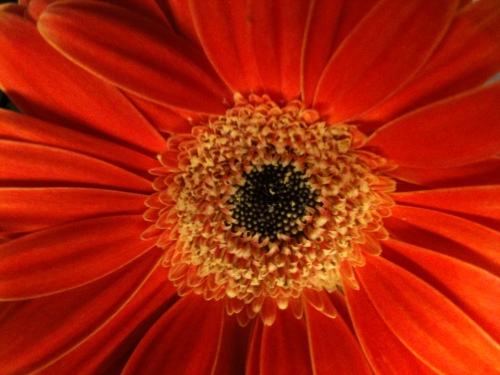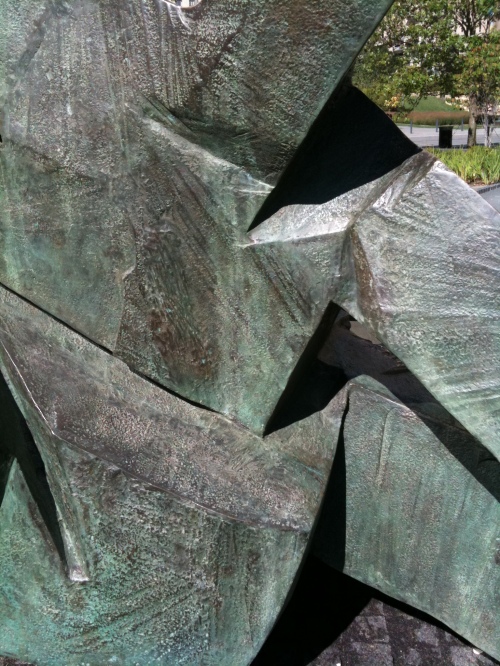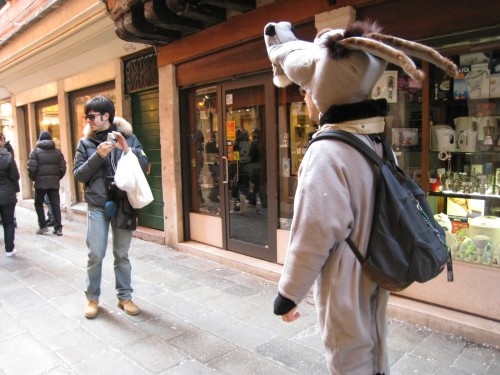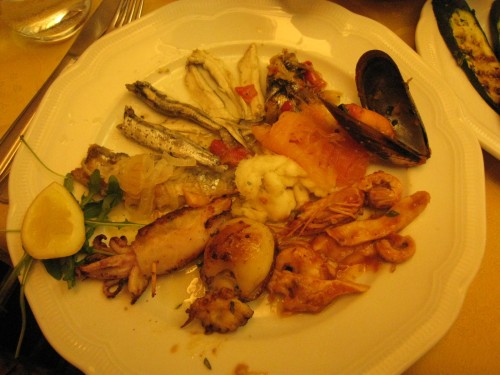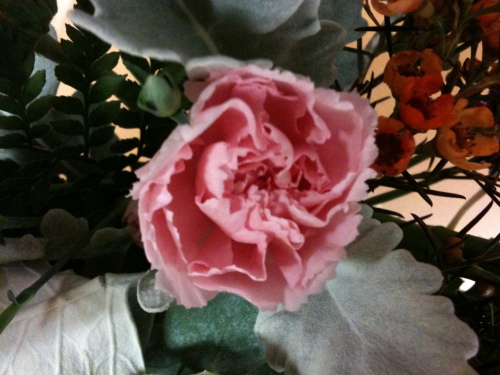This is the sixth and final post in a series of posts about my father-in-law’s passing and my participation in the ensuing rituals; the first is here; the second is here; the third is here; the fourth is here and the fifth is here. While everything is as accurate as I can make it, it’s possible I’ve gotten things wrong. I hope those who know more about these things than I do will share their knowledge.
After we got back to the house from the crematorium, there was a ceremony at the house (which was full of family members and mourners when we arrived). Naina’s photo was on a table in the living room, and the priest had set up everything he needed for the ritual (mostly lots of flowers but also coconuts set into brass vessels, incense, camphor tablets, and various powders). Before the ritual began, the priest used a little stick to paint a fine-lined Vishnu sign on the foreheads of family members.
The body of the ritual involved a few of the coconut vessels, and a string-wrapped vessel, and great heaps of flowers and tulsi (sacred basil) sprigs. I sat by my husband the whole time, sometimes doing what he did, other times putting my hands on something he was holding, sometimes putting my hand on his arm as he did something. The priest would give us rice and a flower dipped in sandalwood (I think) to hold, have us knock our heads with that hand, then put it at the base of the vessel. Occasionally we’d use a mango leaf to sprinkle water on things, or show the incense or burning camphor around in a circle, or triple-pour liquids into a little bowl that later got mixed up and drunk by us and the family.
Everyone lined up to throw flowers and tulsi at the base of dad’s photo, which went on for so long and was done with such intense sincerity that it made me cry. They’d pick up some flowers from the tray on the floor, move them around the burning camphor in a circle three times, hold them to their forehead, and then throw them. Amma cried out when she did this.
The final step was for my husband to walk outside the house with the priest, Chinaina and Romesh, with the latter two holding big stalks of sugar cane. First, an elder uncle and his wife wrapped his head in a cloth. He held a coconut that had been wrapped in a cloth and drizzled with ghee. This was set on fire at some point while they were outside. They walked up the road about half a block, stood there doing something for a bit, then came back. The sugar cane was snapped where the leaves began and the fire-coconut was brought into the house and used to smudge us (in the Native American sense). My husband told me later the point of this whole sequence was to officially move to the next phase of mourning.
We greeted guests and when the caterers told us food was ready, they went next door to eat at long tables that had had been set up in my aunt’s front yard. We stayed at the house talking to guests, and only ate once everyone else had eaten.
Later, I realized the last time we’d eaten this way had been at our wedding reception, almost exactly three years ago.
Posted in cross-culture | Tagged death, funeral, hindu, India, ritual | 1 Comment »
On the morning of the 11th day ceremony (see this post for details), I had to put myself in a sari. This is not something I do all the time, and because I knew I’d have to do it early in the morning, I practiced the night before. I didn’t want to bother my mother-in-law, so I told my husband the plan: search “how to wear a sari” on YouTube. Here it is:
After a few tries and a certain amount of swearing, I understood where to tuck and how to wind the fabric as well as the clever use of safety pins for maximum security. I picked up my hem and carefully picked my downstairs to show my mother-in-law, who said I’d done well.
In the morning, I managed to get myself into the sari and though the pleats weren’t pristine, I felt I looked presentable. Downstairs, there was much milling about as we prepared to set out for the ceremonial grounds. There was also a certain amount of standing around as various people went in search of this or that necessary object for the ceremony, and during one of those times, an auntie laughed gently and plucked at my sari while saying something to my husband.
I backed away, proud of my work and pretty sure she was mocking it. My husband, translating, said she wanted to fix it. I refused, saying we were about to leave (not that that really makes any difference in India, land of flexible time, but it seemed like a good excuse to me).
She backed off and seemed a little hurt. Later, my husband told me exactly what she’d been saying. Roughly, it was this: “I’d like to help her. I don’t want anyone making fun of my daughter.”
Feeling every inch the ingrate, and upset that my husband hadn’t translated this to me at the time, I was extra-nice to her for the rest of the visit. It never seemed like enough to make up for my unintentional blunder, though.
But you can bet your boots the next time an auntie offered to help me fix my sari, I jumped at the opportunity to let someone tug at the yards of silk encasing me.
Posted in cross-culture, India, sari, Uncategorized | Tagged cross-sultural, India, sari | 3 Comments »
This is the fifth in a series of posts about my father-in-law’s passing and my participation in the ensuing rituals; the first is here; the second is here; the third is here and the fourth is here. While everything is as accurate as I can make it, it’s possible I’ve gotten things wrong. I hope those who know more about these things than I do will share their knowledge.
Last time, we left off at the crematorium. We went back the next day to perform rituals with Naina’s and his sister’s ashes, and I found them remarkably similar to what I’d seen the day before. The biggest difference was that at one point, some rice was put on a wall and several people made “caw” noises to call crows over to eat it. This has to do with crows being the conveyors of the soul, which makes it a good idea to placate them with an offering of food.
The next major ritual was the 11th day ritual, which we actually held on the 9th day because the 11th day fell on a Tuesday, which is not suitable for performing the ritual. I’m no entirely clear on the purpose of this ceremony, though I’ve found some sites that describe it as a ritual of absolution, after which family members are free to return to their normal routines.
The morning of the ritual, we got up at 4:30 to find the power out – it turned out to be a fuse in our box but it took a while for our cousin next door to get it fixed. In the meantime, I took a cold-water shower and we were all going around with candles and sweating. Thankfully I was able to get into a sari with the benefit of AC.
We were supposed to leave the house at 6 but due to general milling about, we left at 6:45 or so. The ceremony grounds were about half an hour away, near a temple and next to a river, but because everything that happens there has to do with death, it’s separate from the temple. There is a small shrine there (with our family deity, among others), but that’s it.
The grounds are basically 5-6 rows of covered but open-sided dirt-floor huts with pits for fires (an essential part of many ceremonies). Our priest was at one end of a row, which was nice as it was close to the river access and it was easier to hear – with ceremonies going on in every available space and people milling about, the place was loud.
Our priest was not set up for us when we got there; he snapped his fingers at helper lady to get things rolling. She drew a line around the perimeter of the hut using white powder, and then made a set of multicolored (red, black, ochre) perpendicular lines on each side. Then she laid a bunch of banana leaves down and poured out 12 piles of raw rice, topped each with a leaf and a couple of dark bits, then added about five coconuts, several bunches of fresh beans and squashes and bananas.
My husband went off to be shaved (only his face, there were immigration worries attached to shaving his head) and bathed, and came back dripping. I felt bad for him, as it was pretty cool. He and Chinaina (the uncle designated to help with all the death rituals) sat side by side, crosslegged, on very low stools, facing the priest. The rest of us (about seven close family members) sat outside the hut on plastic chairs.
There was a little man made from sacred grass that they laid on a banana leaf and did sort of a funeral ritual with – abhishekam and rounding with incense and wrapping in cloth and sprinkling with water, all while the priest chanted, and sometimes with the men repeating the chant. At one point all of us got up to put a green powder and drops of water at three points along the body – head, midsection and feet – three times. Finally, we took the effigy over to a wall where he was left along with everyone else’s things.
The next part of the ceremony centered on a couple of coconuts placed in small brass vessels lined with mango leaves. There was a lot of rounding with incense and camphor, being given rice to hold while knocking your head and then throwing the rice at the base of the vessels, being given flowers and tulsi (sacred basil) to hold and then throwing them, throwing lots of flower petals while the priest chanted, having grains and pulses rinsed off the hand with water onto the vessel by the priest. After a while, I was called over to participate in this ceremony.
At one point, the men got up and had to smear the colored lines with their left foot from the inside out on each side of the square.
Then my husband and his mother and me performed a ritual involving the piles of rice; sprinkling water on them, then touching them, then our faces. (There were 12 of them so that we covered 12 months and don’t have to do the ceremony again for a year). At another point, we put rice balls on a banana leaf and sprinkled water on them using a bundle of the sacred grass. Then we took them over to the communal offering wall, picking our way in bare feet, weaving between people. We had to watch our leaf to make sure a crow came to eat from it; when a goat approached it, the priest smacked its butt to shoo it away.
The highlight of the ceremony for me was when a calf was led over and my husband and I each had to feed it an unpeeled banana. My husband got nervous and dropped his, but I thought it was really fun and had a good time with it. Then everyone walked around it and touched its back near the base of the tail. I found out later that this was an act of charity that’s considered an essential part of the ceremony; the calf is kept specifically for this purpose.
My husband took the tray we’d been tossing flowers and herbs into down to the river with all of us following, and cast all of it into the water. He dunked himself in the river a couple of times, which made me nervous – Indian rivers are used for everything from laundry to human waste – but he wasn’t worried, and never got sick. The rest of us only had to wash our feet and hands and sprinkle our heads, the pick our way back up the wide, slippery stone steps that led to the water.
When the ritual was finished, we walked around the shrine three times, made a small donation, and got ashes to put on our foreheads and throats. My husband and I rode back to the house in the bouncy way-back of the Land Rover cab, holding hands, sweating and talking about the ritual. And even smiling a bit – mostly about the calf.
Next time: A fresh sari, another ritual, and a feast
Posted in Uncategorized | Tagged ceremony, death, funeral, hindu, India, ritual | 1 Comment »
I’ve been asked to expound on the pastries we had in Paris. Consider yourself warned.
The pastry that prompted the request was the Choc Africaine I had at the Versailles location of Angelina, which is a venerated sort of terribly fancy old Parisian tearoom. Because I was trying to act un-touristy, I did not take a photo of it. But it’s okay, because someone else on the interwebs did take a photo of one. Here, go look.
As you can see, it’s not huge. It doesn’t need to be – just look at the description from the menu: “Dense chocolate cake, rich chocolate mousse, 100% African dark chocolate glaze.” I tried to eat it slowly, to get all three layers in each bite and savor them, and I think I did fairly well. It was really, really, hard though because all I wanted to do was dive in and roll around in it. If you want to see the other crazy-amazing pastries Angelina is famous for, go here.
One of our favorite memories of Paris is eating pastries for breakfast at the Rue Cler market street. We were not sitting down; we bought them from the outside counter of a pastry shop and tore into them as soon as the lady handed the bag over. The first one was an apple tartelette, a very simple puff pastry base with a single chunk of apple sliced into about 20 paper-thin slices and fanned out under a glaze. The simple perfection of this pastry sent us both into raptures.
We also picked up several puff-pastry quiches, which we ate while walking down the street. They were also very, very good, and again very simple – I think one had onion, and the other was plain, but I wouldn’t have changed a thing about either of them.
The other pastry that stands out in my mind is macarons. These are not the haystack-like macaroons you might be thinking of, though the word is similar. They look like this:
The outsides are twin wafers of delicately crusted, lightly sweet almond paste meringue. They cozy up to a richly flavorful filling of ganache or jam. They’re Oreos à la Marie Antoinette: fancy, dainty and rich.
They’re fun to eat, too: Your teeth break through the delicate outer layer and sink into the soft interior of the cookie before hitting the filling. We had them every time we had saw them – even from the dreadful basement food court at the Louvre.
If you live in St. Louis you can get macarons in at least two places. Downtown’s Café Cioccolato has them in a pretty set of six (chocolate, lemon, raspberry, mocha, pistachio and vanilla). I wrote about the cafe for Feast in a post that went up earlier this week. They import their macarons from Paris, and keep them frozen until they’re ordered (they won’t keep at room temperature).
4 Seasons Bakery also makes them; theirs are larger and more inventive in terms of flavorings. Their storefront is in St. Charles, but they also sell at the Maplewood Farmer’s Market. Get there on the early side, though: their macarons had sold out last time I visited their stall.
Posted in Uncategorized | Tagged food, paris, pastries, travel | 2 Comments »
Tromping around Versailles is tiring, hungrymaking stuff. It’s beautiful and worth visiting of course, but people constantly bump into you (unavoidable) while you’re trying to stay out of people’s way (impossible). Meanwhile, the audio tour is not always accurate (though it is cheesy and funny) and if you’re not used to shuffling along on hard floors for hours on end, well, it’s kind of taxing.
So imagine our delight to turn a corner and find a restaurant. A real restaurant, not the fast food nonsense they have under the Louvre. Non, this was Angelina, an old Parisian restaurant famed for its pastries. Those pastries at the top of this post. (Yes, we did, and they were marvelous.)
When we stumbled on this oasis it was about 2:45 – a bit late for lunch even by French standards. I cautiously approached the officious young suited woman at the maitre’d stand. She asked me something, quickly, and I mentally crossed my fingers and responded, “deux pour manger.” I’d heard other people say this, figured it meant roughly “two for lunch.”
It worked. She picked up two menus and led us into the dining room, said I could shut the window behind my seat if it got too cold, and I responded with something that didn’t make her switch into English. Success!
I must have stumbled a bit though, because she asked (in French) where I had learned my French. My reply made her gasp and giggle: “Aux Etats-Unis,” in the United States. Her hand flew to her mouth and she kept laughing. Clearly my answer was unexpected.
And that’s how I managed to simultaneously shock and impress a Frenchwoman. A young one, but still.
Posted in Uncategorized | Leave a Comment »
This is the fourth in a series of posts about my father-in-law’s passing and my participation in the ensuing rituals; the first is here; the second is here and the third is here. While everything is as accurate as I can make it, it’s possible I’ve gotten things wrong. I hope those who know more about these things than I do will share their knowledge.
Before we move on to the crematorium, I have to share one image from the body preparation ritual. Amma (my mother-in-law) was seated to the right of Naina’s body, and my husband was crouching at the foot of the body, facing away, with his hands behind his back. The uncle who was conducting the ritual took a ball of string and wound it around my husband’s thumbs, then around Amma’s hand, and around the other side of the body. This was repeated two or three times, and then the string was broken to signify (I assume) the breakup of the family or the departure of my father-in-law.
Once the home ritual was completed and Naina’s body was loaded in the ambulance (along with my husband and a few male family members), we were given puffed rice to throw at the closed doors.
Some families allow women at the crematorium, others don’t. Naina’s didn’t but Amma’s does; after some discussion it was decided that we would follow her family’s tradition. I piled into a tiny car with Amma, her sister and Peddamma (Big Mama, the eldest married woman in Naina’s family). Important note: we were all in saris, and mine was looking pretty droopy and disheveled by now. I kept lifting the front of the skirt so I wouldn’t trip over it.
We went to the municipal crematorium – there are private ones, but this was a decision reportedly made on convenience and price. This meant there were shanties lining the road to it, a crowd of folks wailing just inside the gates when we arrived, and nowhere private to wait when we arrived.
The body was laid out on an elevated stretcher at the foot of a long ramp by the time we got there, but there was some business to be taken care of in the office, so we ladies sought a shady spot to wait. When the men came out of the office, we walked over to where the body was waiting.
Then, to put it simply, more abhishekams were performed. Liquids were poured on the body, incense was waved, and water was dipped and sprinkled. I don’t mean to gloss over what happened; it was all very moving and riveting. There’s just no way for me to remember everything that happened. The only way to do that would have been to videotape the whole thing.
I do, however, remember the reappearance of the chicken. The last time I saw it, Chinaina (Little Daddy’s) was heading into the house with it. He’d picked it up from where it had been waiting quietly, its feet bound with string. He unwound the string, tucked it under his arm, and walked past me and all the other mourners into the house. I found out later that he had cut its throat in the backyard, using a knife that was not quite as sharp as he would have liked.
Now, at the crematorium, clutching my skirt to keep it out of the dust, Chinaina produced a white cloth sack. He reached into it, pulled out the chicken, and tucked it into the cloth wrapping at the feet of the body. I remember thinking, “Wow, that sure is one quiet chicken.” Then I thought, “Huh, that chicken isn’t moving at all.” And then it dawned on me: The chicken was no more. Perhaps if I hadn’t been operating on five hours of sleep in the space of 36, I would have cottoned on faster.
When I asked why the chicken was put in with Naina, I was told that when someone dies on a Saturday, they tend to take someone else with them. And even though Naina’s sister had passed away the next day, the famly had decided to include a chicken with his body just to be on the safe side.
The final part of the pre-cremation ritual involved my husband holding a clay vessel on his left shoulder and walking clockwise around the body three times. At the beginning of each revolution, a hole was punched in the side so water could trail out as he walked. Then the vessel was smashed completely, water and shards going everywhere. I was told later that this signified the release from worldly things – people, things, etc., – and the body’s release from the world in general.
Right after that, the men rolled the body up the ramp and behind the gates where the ovens were located. Everyone except Amma and my husband stayed outside the gates, but we were able to see them put the body into the flames. I’ve never felt as anguished as when I heard my husband let out a terrible wail. When he returned from behind the gates he said his Dad never liked the extreme heat of the aluminum plant where he spent his working life.
Next time: Comic relief, in France.
Posted in Uncategorized | Tagged funeral, hindu, India, intercultural experience, ritual | 6 Comments »
This is the third in a series of posts about my father-in-law’s passing and my participation in the ensuing rituals; the first is here and the second is here. While everything is as accurate as I can make it, it’s possible I’ve gotten things wrong. I hope those who know more about these things than I do will share their knowledge.
Standing on the porch, watching with all the other mourners, I had no idea why things were being done to Naina’s body. He’d been carried from the freezer box and laid on a simple metal bedframe in the carport. The ceremony participants had been prepared at Auntie’s house next door, then returned to my in-laws’ house to perform the ritual that was necessary before he could be taken to the crematorium.
The bulk of the ceremony involved the participants repeatedly pouring milk, honey, oil, powders (probably turmeric and/or sandalwood) and something that looked very much like dal over the entire length of the body. Every so often they’d rinse everything off with water from the specially prepared vessels. It was mystifying and riveting and it went on for at least an hour.
Later, maybe even the next day, I asked why things had been poured on the body. I was told that as soon as someone dies, they’re considered to have joined with God, and so the body is treated like a god’s body. Statues of Hindu gods and goddess that reside in temples are routinely bathed with milk, oil, honey, ghee, turmeric, and various foodstuffs in a process called abhishekam – and that’s exactly what they’d just done for Naina.
Abhishekams are done on specific auspicious days and are common to Dharmic faiths (Hinduism, Buddhism, Jainism, Bon). The nearest Christian ritual, as far as I can figure, is anointment, which can never hope to be as extensive or elaborate as abhishekam.
In addition to the abhishekam, the participants would occasionally take two sticks of incense and make three clockwise circles, each in turn. They’d also do this with a lit camphor tablet sitting on a ceremonial silver spoon sitting on a silver tray. At times, Amma’s participation was required, as was mine – along with other key family members, I dipped my hand in oil and smeared it on Naina’s forehead with the backs of my fingers, then did the same with mud.
Whenever I wasn’t participating in the ritual, I was watching from the porch or veranda, and I wasn’t alone. Approximately 40 close family members had stayed to watch the proceedings, and jostled around the porch, shifting occasionally to get a better view. There was a lot of crying throughout the ceremony, and occasionally some wailing – and once, a particularly vocal mourner flung herself against me, wailing and saying, “Who will listen to my troubles now?” I patted her back and told her I was sorry for her loss. Then her cell phone rang. She answered it and moved into the house.
There were several rituals marking Amma’s transition from wife to widow, but none as heartbreaking as the one during which she had to sit next to the body. Earlier, the most senior member of Naina’s family (peddamma, literally “big mama”) had tearfully put red glass bangles on her arms and a string of jasmine flowers in her hair. Now, in the carport, Peddamma removed one bangle and placed it on Naina’s chest, then broke off part of the jasmine string and put it near the bangle. A pair of garlands were brought and put on Amma and Naina, then switched between them several times. I’m fairly certain both garlands ended up resting on the body. The whole time, Amma sat in one of the rented chairs just to the body’s right, looking petrified and as if she hoped that by looking away all the sorrow and chaos would disappear.
Eventually the body was wrapped from head to toe in a white cloth and put on a metal stretcher that had been lined with a mat of leaves. A few male family members, including my husband, lifted the stretcher into the ambulance that would take all of them to the crematorium.
Next time: At the crematorium.
Posted in Uncategorized | Tagged funeral, hindu, India, intercultural experience | 4 Comments »
I know, at the end of the last post I promised you the next installment of the funeral rites, but I thought perhaps a little levity was in order.
When we learned that Naina had passed, we were about 36 hours from returning to the U.S. from a European vacation, a sort of second honeymoon. Incidentally, he was really excited we were going, and my husband talked with him every other day or so while we were there.
One of the great things about traveling, I think, is interacting with the locals. Herewith, I bring you one of my favorite local interaction stories.
We were in Venice, and had made our leisurely way to a restaurant recommended by the owner of our hotel. It’s run by a couple in their 70s, and we were seated by the husband. Let’s call him Beppo. He left us with menus and came back after about 10 minutes, whereupon he asked for our wine order. My husband Mowgli (not his real name) asked for Moscato (he’s a fan of the sweet wines), whereupon Beppo berated Mowgli, in Italian, for ordering a dessert wine as an aperitif.
I have two semesters of Italian, and Mowgli understands only the Italian included in “The Godfather,” but we both understood exactly what Beppo was going on about. “That’s for after dinner! You can’t order it before you eat! Here! Look, we have many nice wines! White, red, you pick one!”
We selected a Chianti Classico. Beppo indicated his approval, went to fetch the bottle and came back in about 10 minutes. He opened, Mowgli sipped, swished, swallowed and approved. Beppo poured for both of us. Then he asked for our dinner order.
I said, “ Il mio marito e vegetarian. Non mangia ni pesce, ni carne.” My husband is a vegetarian. He doesn’t eat fish or meat.”
Beppo threw his hands in the air, declared that he was going to get his wife, and turned on his heel. I didn’t hear much of what he said as he stormed off, but I imagine it was something like, “Crazy Americans! First they want Moscato to start, then they don’t want fish or meat! You go deal with them, I’ve had enough!”
For the record, about 30 minutes later I had one of the best seafood meals of my entire life.
Posted in travel | Tagged food, intercultural experience, italy | 2 Comments »
This is the second in a series of posts about my father-in-law’s passing and my participation in the ensuing rituals; the first is here. While everything is as accurate as I can make it, it’s possible I’ve gotten things wrong. I hope those who know more about these things than I do will share their knowledge.
As I’ve been telling friends and family about the rites and rituals that took place in the days and weeks after my father-in-law’s death, it’s struck me over and over how they can’t really be called a funeral. Not in the Western sense, anyway.
To begin with, the rituals are performed largely at home, and they usually start immediately following the person’s death. Because it took us about 36 hours to get to my husband’s parent’s house, the body was placed in a “freezer box” so it would keep until our arrival. Essentially, this is a superchilled platform topped by a plexiglas cover so you can see the body from the top and sides (though the view of the feet is partially blocked by the name and number of the rental company). There were several garlands resting on top of it, arranged so you could see the face, and several more at the feet.
When we arrived, at about 7 a.m., the house was full of people, sitting in chairs rented for the occasion. A Hindu priest banged a small gong in a steady and frankly mournful one-two, one-two rhythm, and occasionally blew on a conch shell (this went on all day). There were chairs arranged on the porch and patio, and a colorful canopy to protect mourners from the elements. Naina’s (dad’s) body was in the front room, and Amma (my mother-in-law) was sitting beside it, surrounded by female family members. We were both overcome by emotion as we saw the body, but we weren’t the only ones weeping. Most people who came to the house at this point were openly, nakedly emotional, crying and grasping our hands and sometimes wailing.
The house gradually filled with people, mostly family members but also close friends. They’d seen the announcement in the paper that we’d be performing the rites necessary before taking the body to the crematorium, or had heard about the event through the grapevine. We started around noon, I think, and until that point, people who came to the house would greet us and Amma, then take flower petals and tulsi (sacred basil) from a tray on the floor at the foot of the box, and toss them onto the top of the box after holding them to their foreheads and briefly praying.
The top of the box was removed and we touched the face and hands to say goodbye, but also touched the feet to receive blessings, exactly as is done with revered elders. I think there were a few rituals performed over the body before it was carried outside for the main preparatory rites. I can’t quite remember — I was short on sleep, it was hot, and honestly there was so much going on that it’s not possible to remember everything.
My husband and two key male family members, all wearing white dhotis and shirts, were taken next door to our aunt’s house, where they prepared the water vessels to be used in the ceremony. The sign of Vishnu was drawn on each three times, and the three men hoisted the vessels onto their shoulders — most likely their right shoulders, the “good side” in Hindu rituals. They stood in line, and two other male family members in front and back of them held a cloth above their heads (I couldn’t help but think of a huppa) as all five walked in a line to where the body was waiting (in the carport, next to the porch). I had gone over to auntie’s to observe their preparations, and followed them back over to our house, where mourners now crowded on the porch, waiting for the ritual to begin.
So, like I said, not really a funeral. More like an elaborate, painstaking, highly ritualized leave-taking performed in front of a large and highly emotional audience.
Next time: The main ritual, as best I can remember it.
Posted in Uncategorized | Tagged funeral, hindu, India, ritual | 1 Comment »
